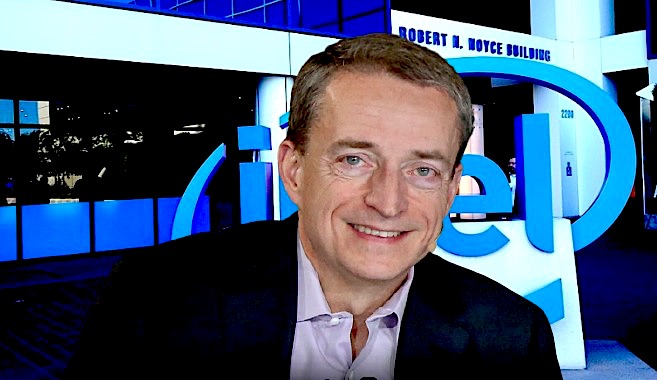Manufacturing stumbles have cost it business. AMD, its most direct rival, outsources production to Taiwan Semiconductor Manufacturing Company (TSMC), whose technology is now ahead of Intel's. That means AMD's chips are generally faster, and consume less power; its market share has more than doubled since 2019.
芯片制造上的挫败使英特尔伤到元气。其最直接的竞争对手AMD将生产外包给台积电(TSMC),而后者的技术目前领先于英特尔。这意味着AMD公司的芯片速度普遍更快,功耗更低;自2019年以来,AMD的市场份额翻了一番多。
A second challenge is the industry’s growing specialisation—a problem for Intel’s traditional forte of general-purpose chips, especially if desktop pcs continue to stagnate. Technology giants, flush with cash and keen to extract every drop of performance for their specific purposes, increasingly design their own semiconductors. In 2020 Apple said it would drop Intel from its laptops and desktops in favour of custom-designed chips. Amazon is rolling out its “Graviton” cloud-computing processors, also designed in-house and made by TSMC. Microsoft, whose cloud business is second only to Amazon’s, is rumoured to be working on something similar.
英特尔面临的第二个挑战是芯片制造行业逐渐走向定制化,这是英特尔通用芯片(英特尔的传统王牌产品)所面临的问题,尤其是在台式电脑继续停滞不前的情况下。科技巨头们资金充裕,热衷于为自己的特定需求而榨取全部性能,进而不断更新自家的半导体设计。2020年,苹果表示将放弃在其笔记本电脑和台式机上使用英特尔芯片,转而采用定制设计的芯片。亚马逊正在推出其“Graviton”云计算处理器,该处理器也经由台积电(TSMC)自主设计和制造。云计算业务仅次于亚马逊的微软据传也在进行类似的工作。

Intel has also failed to make any headway in smartphones, the most popular computers ever made. An effort in the late 1990s to build graphics chips, which have also proved handy for artificial intelligence (AI), and to which Nvidia owes its enviable valuation, petered out. Attempts to diversify into clever new sorts of programmable or memory chips—in 2015 it paid $16.7bn for Altera, which makes them—have so far not paid off in a big way.
英特尔在智能手机这一有史以来最受欢迎的计算机领域也未能取得任何进展。上世纪90年代末,英特尔公司致力于研发图形芯片,事实证明,图像芯片也有益于人工智能(AI)。英特尔逐渐放弃了研发工作,而英伟达在图形芯片上的努力使其获得了令人羡慕的估值。英特尔试图实现产品多样化,开发新型可编程芯片或内存芯片,2015年,英特尔斥资167亿美元收购制造上述芯片的阿尔特拉公司(Altera),但迄今尚未获得大的回报。
Mr Gelsinger has yet to say how he plans to deal with the challenges. He does not look like a revolutionary. He began working at Intel aged 18, before leaving in 2009 to preside over EMC, a data-storage firm, and for the past nine years heading VMware, a software firm. In an email to Intel’s staff after his appointment was announced he invoked its glory days, recalling being “mentored at the feet of Grove, Robert Noyce and Gordon Moore”, the last two being the firm’s founders. Like them but unlike his predecessor, Bob Swan, Mr Gelsinger is an engineer, who in 1989 led the design of a flagship chip.
基尔辛格还没有说明他计划如何应对这些挑战。他看起来不像一位革命者。他18岁时开始在英特尔工作,2009年离职后执掌数据存储公司易安信(EMC),过去九年来一直领导软件公司威睿(VMware)。宣布就任后,在给英特尔员工的一封电子邮件中,他提到了英特尔的辉煌岁月,回忆起自己“曾接受过格罗夫、罗伯特·诺伊斯和戈登·摩尔的指导”(后两位是英特尔的创始人)。基尔辛格与他们一样是工程师(这点与前任总裁鲍勃·斯旺不同),他在1989年领导了一款旗舰芯片的设计。
译文由可可原创,仅供学习交流使用,未经许可请勿转载。












